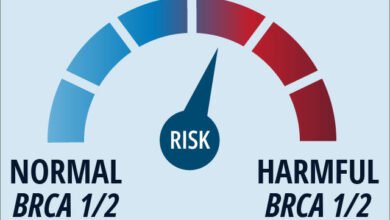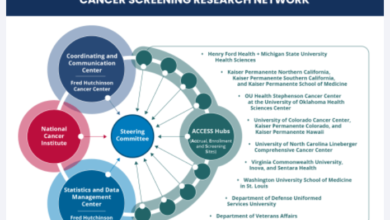Cancer Research UK – Science blog

What’s the first thing that comes to mind when you hear the word ‘virus’?
If I had to guess, I would say you’re thinking about something negative. Most likely an illness of some kind. And, of course, that’s a reasonable answer.
But what if I told you we can use viruses as a treatment for people with some types of cancer?
There’s a special type of virus called an oncolytic virus that we can use as a type of immunotherapy. Oncolytic viruses are specially engineered to infect and replicate inside tumour cells, leaving normal, healthy cells uninfected. Once inside a tumour cell, the viruses cause the cell to die.
And that’s not all. These viruses cause what’s called an immunogenic cell death. Put simply, this means that when the cells die, they trigger a response from the body’s immune system.
By killing a tumour cell, the viruses help the body’s immune system to recognise tumour cells as foreign, because it sees the virus as foreign. That stimulates immune cells to attack and kill them.
That might sound like it’s win-win, but there’s a catch.
The immune system doesn’t just work with these viruses, it also works against them. If the body’s immune cells find them before they reach the tumour, they’ll destroy them, just as they would with any other foreign virus or bacteria in the body.
For some cancers, like melanoma, this isn’t much of a problem. As these cancers are on the skin, the viruses can be injected directly into the tumour..
But for other, less easily accessible tumours, this poses a big problem. The virus has to travel through the bloodstream to reach them and will encounter a lot of immune cells on the way.
So, if we’re going to make oncolytic viruses a more effective treatment, we’re going to have to find a way to get them into tumour cells without immune cells getting to them.
Luckily, researchers at the University of Sheffield, part funded by us, have found a way to do it.
Ever heard of a Trojan horse?
The big eater
In this case, the horse is a type of immune cell called a macrophage.
The job of a macrophage is to surround and kill any foreign microorganisms it finds in your body by engulfing and destroying them. In Greek, macrophage means ‘big eater’. And we can use that property to our advantage. We can put the virus inside a macrophage.
“Macrophages are very happy to engulf and eat things, which makes them quite easy to infect with a virus,” says Dr Munitta Muthana, who leads the team.
“But what also makes them great candidates for this is that you find a lot of macrophages in many tumours already. For example, some solid tumours have been reported to have around 50 to 80% macrophage content.
“And unlike other immune cells, macrophages don’t just sit on the periphery or the outside of the tumour. They have this ability to penetrate quite deep into it.”
So, in short, we can make macrophages from the blood of a person with cancer and infect them with the virus. Then, when we re-inject them into that person, the macrophage will take the virus straight into the tumour because that’s where it naturally homes in.
But you might be wondering: how does the virus kill a cancer cell from inside a macrophage?
The answer is it doesn’t.
Because once the virus-containing macrophage gets into a tumour, the virus sees a better opportunity.
A virus’s main purpose is to replicate as many times as it possibly can. It does that by infecting a cell and hijacking that cell’s own machinery to make copies of itself. That makes a tumour cell an ideal home for a virus.
What better way to replicate than by hijacking a cell that is itself rapidly replicating?
“With any cell that gets infected, eventually, the virus will leak out to try and find a better environment for survival,” says Muthana.
“In this case, the virus will get into the tumour and think ‘I actually don’t want to be in this macrophage, I want to be in that tumour cell that’s rapidly dividing, because that means I can produce more progeny’.”
The virus will leave the macrophage in favour of a tumour cell. And that’s when it will start to have therapeutic effect.
Reaching the difficult targets
Muthana’s team have been investigating the use of oncolytic viruses in several cancer types over the last few years. Now, they’ve turned their attention to cancers that have fewer current treatment options.
Triple negative breast cancer (TNBC) is a type of breast cancer that makes up about 15% of breast cancers. It’s ‘triple negative’ because it lacks receptors for the hormones oestrogen and progesterone, and a protein called HER2.
Without these receptors, hormone treatment and targeted therapies like Herceptin aren’t effective, meaning that overall, there are less treatment options for TNBC.
And that brings us to the team’s recent research, published in Future Pharmacology, using oncolytic viruses against TNBC.
They treated mice with TNBC with an oncolytic virus called HSV1716 in two groups. In the first group they administered the virus by itself, and in the second they administered it inside a macrophage.
They found that in the mice that had been treated with the virus inside a macrophage, the growth of their tumour was slower, and they survived their cancer for longer than those in the other group.
And that’s not all. Because the virus is protected by the macrophage, the team found that the viral load, meaning the amount of virus in a person’s blood, needed for the treatment to work was 100-fold less than when delivered without the macrophage.
The presence of the macrophage also lessens off-target effects, as it carries the virus directly to the tumour without giving it the opportunity to infect other cells.
The team have demonstrated that these viruses are effective at treating cancers like prostate cancer before, but this is the first time it’s been shown to work in TNBC.
From cold to hot
Another reason TNBC tumours are hard to treat is that they’re often what we call ‘cold’ tumours. This means they don’t have a lot of immune cells in and around them. That lack of immune cells, specifically cells called T cells, is the reason they don’t respond to immunotherapies.
But oncolytic viruses could change that.
“By attacking these cold tumours with a cancer-killing virus, you’re ‘waking up’ the immune system,” says Muthana. “And that can reprogram them and make them ‘hot’ tumours with lots of immune cells.
“That could open the possibility of treating these patient groups with things like checkpoint inhibitors, which are very topical at the minute. There’s potential to look at combinations of these therapies for patients.”
Oncolytic viruses could therefore represent a new treatment option for people with these types of hard-to-treat cancers. But more than that, they have the potential to make hard-to-treat cancers more receptive to existing therapies.
So, while it will take some time before these therapies have been developed for use in humans, the future looks hopeful for oncolytic viruses.
And ‘hope’ probably wasn’t the first thing that came to mind when you thought ‘virus’.
Jacob

Dr Munitta Muthana
Dr Munitta Muthana is a group leader at the University of Sheffield. She has a long-standing track record in researching the development of cancer-killing viruses. Her team, Nanobug Oncology Sheffield (@Nanobug_shef), have created novel platforms to deliver viruses to tumours, successfully implementing cell delivery and magnetic guidance strategies utilizing soil bacteria.
Currently, Dr Muthana’s laboratory is focused on protecting these viruses in the bloodstream and creating advanced nanomedicine platforms that enhance drug delivery to tumours while also preserving healthy tissue.
Source link
#Cancer #Research #Science #blog



